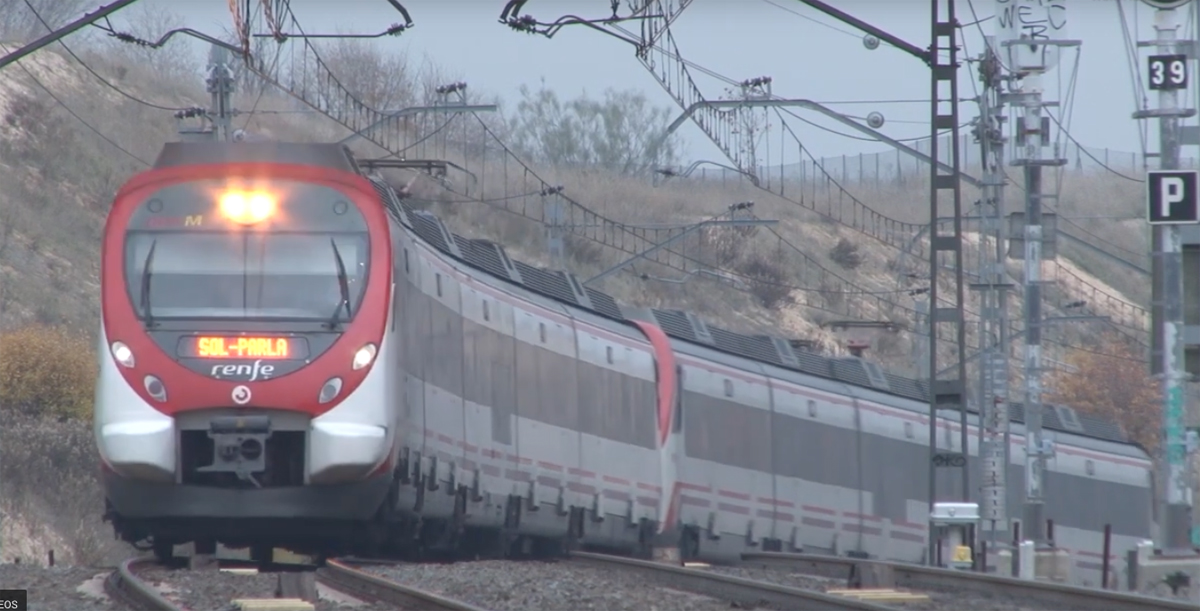FORT WORTH, Texas — BNSF Railway has placed in service another section of quadruple main line on its Southern Transcon route, this time on the Seligman Subdivision near the California-Arizona border.
The four-mile section of fourth main line through Needles, Calif., went into service recently, BNSF said in a June 7 customer advisory.
The Needles project joins two others — five miles of quadruple main line through Amarillo, Texas, on the Hereford Sub and 10 miles of triple track through Belen, N.M., on the Gallup Sub — as locations where high-priority trains can more easily scoot around slower trains at crew-change points.
The Hereford and Gallup projects were completed late last year.
The additional high iron allows 70-mph intermodal trains to leap ahead of slower-moving merchandise and unit trains at crew-change points, which BNSF says will alleviate congestion, boost average train speed, and improve service on the busiest intermodal route in North America.
The Gallup sub project, between Belen and Dalies, also provides more capacity on the 10-mile 1.25% climb for westbound traffic.
Still to come: About 12 miles of third track between West Needles and Ibis, Calif., a multi-year capacity project on the Needles Subdivision that remains in the permitting and environmental review stage, BNSF spokeswoman Amy Casas says.
The third track will provide more operational flexibility up the 1.4% grade that westbound trains face when pulling out of Needles.
Separately, BNSF says it has completed a new 10,000-foot siding at Dobbin, Texas, north of Houston, that complements a connection between its Houston and Conroe subdivisions that was completed last year.
“Both the siding and the new connection will help facilitate growing traffic flows between the Dallas-Fort Worth area and Houston/Gulf Coast,” BNSF said in its shipper advisory.
This year BNSF is spending $760 million on network expansion and efficiency projects.













This makes much more sense than the moves the UP is making to appease the followers of Hunter Harrison on Wall Street who only look at quarterly earnings reports.
This is why some folks think the the rail lines should be owned by the government and then leased to railroads as is done in Europe.
BNSF is not immune to making cuts such as the virtual mothballing of Raton Pass which in the DC diesel days made sense to avoid; but why not try a few hot trains from ElPaso thru Albuquerque; Pueblo to Denver using the Old Rio Grande short fast trains of the 60’s.
With AC traction it may be a slow ride up Glorietta and Raton but there would be no need for helpers. This would be the perfect runs to try one man crews as jobs would be created where now there none. Also the most trouble prone areas of both passes are close to if not beside I 25 so other than the occasional blizzard a traveling conductor/ “repairperson” would be do-able.
Just a thought
Curtis is right,instead of referring to railroads in automobile and truck terms,simply call them what they are such as “super railroads” or ” super railways”.
Needles needs the 4th track, account this is a crew change point and all trains must stop.
Also the number of trains through Needles is greater then on the eastern end.with the split off at Clovis and Amarillo TX.
The single track bridge, is not a real major issues with the trains moving through, not stopping.
Long overdue.
Tom: Not all of the traffic through Needles would be headed toward Chicago. A significant portion would be cutting off the transcon at Avard, OK and headed toward Memphis and the Southeast. Likewise; traffic would also peel off in the Clovis, NM area bound for Houston or Amarillo bound for Dallas.
Since a significant portion of BNSF’s capacity related capex over the past 20 years has been from Oklahoma west; it would follow this is where their greatest concentration of traffic occurs.
Rather than “superhighway” why not call it the transcon “raceway?”
This expansion to four tracks on segments of the Transcon hearkens back to the four-track main lines of the New York Central Railroad and the Pennsylvania Railroad.
This is how you provide capacity on a long distance lane supporting route when the returns are there. Terminals too?
But how to make the shorter lanes pay? And even Avard-Tulsa-Springfield-Memphis supports long lanes from California too but it’s more circuitous, curvy, and hilly so more expensive to operate. It’s gotten some love you can observe (even on the Avard segment) but I bet it reduces the margin on those lanes some and the ability to expand might be limited (even with less coal joining at Springfield). Even if the business is there.
What perplexes me is why the former ATSF transcon is still single track over the Missouri river at Sibley, MO. I realize this is fairly level track but I’m surprised that this important artery can function efficiently past this choke point. If traffic warrants a fourth main line at Needles, CA, how can the same traffic (presumably going cross country) fit through this single track section of substantial length?
What are they doing up around the North Coast ?
Now this is America!
it’s important to keep train traffic flowing
This is what can be done when you’re not beholden to shareholders. It’s called long term planning and investment, as opposed to some MBA’s short term quarterly analysis (emphasis on anal).
All paid by BNSF wish truckers can do the same with Interstates.